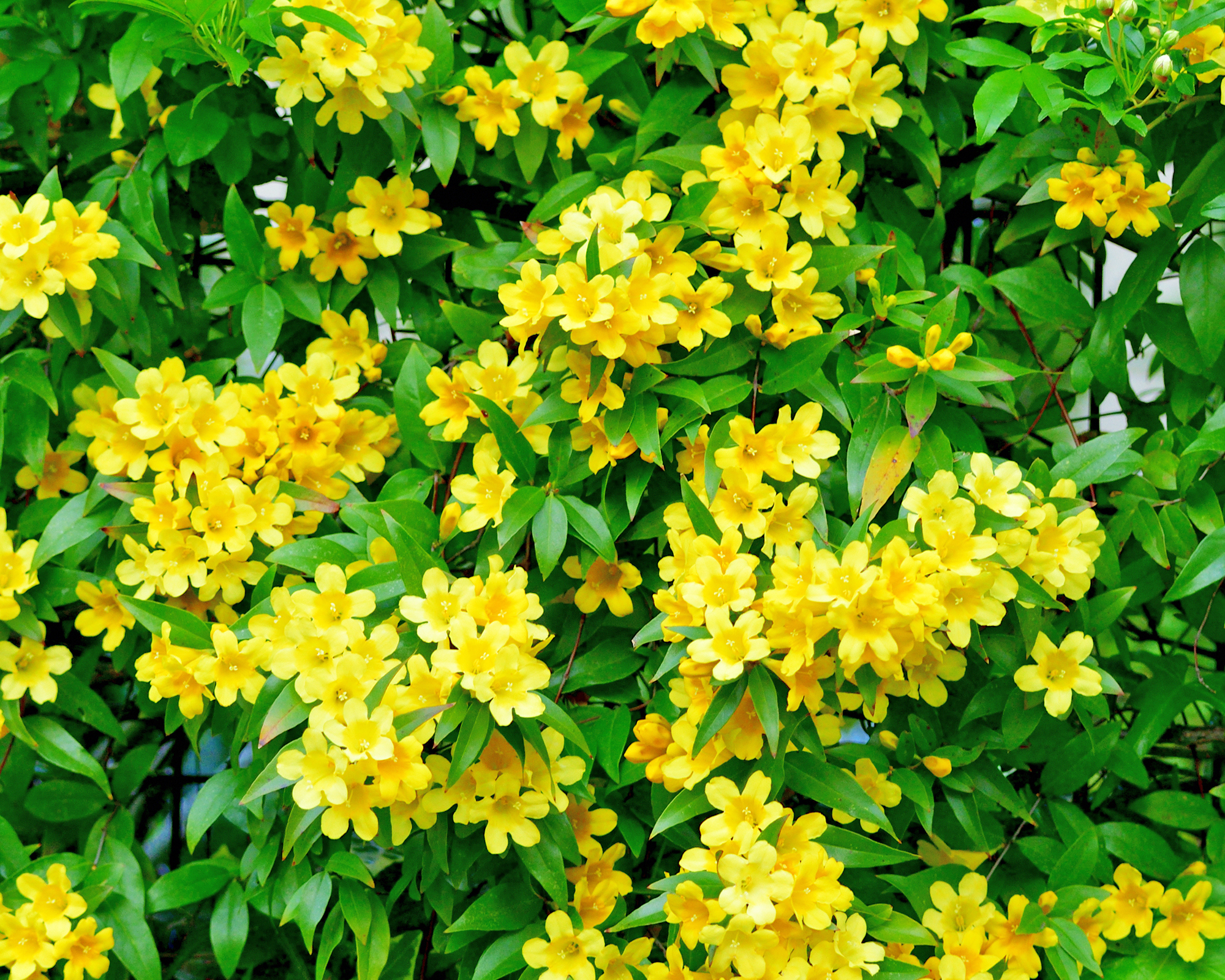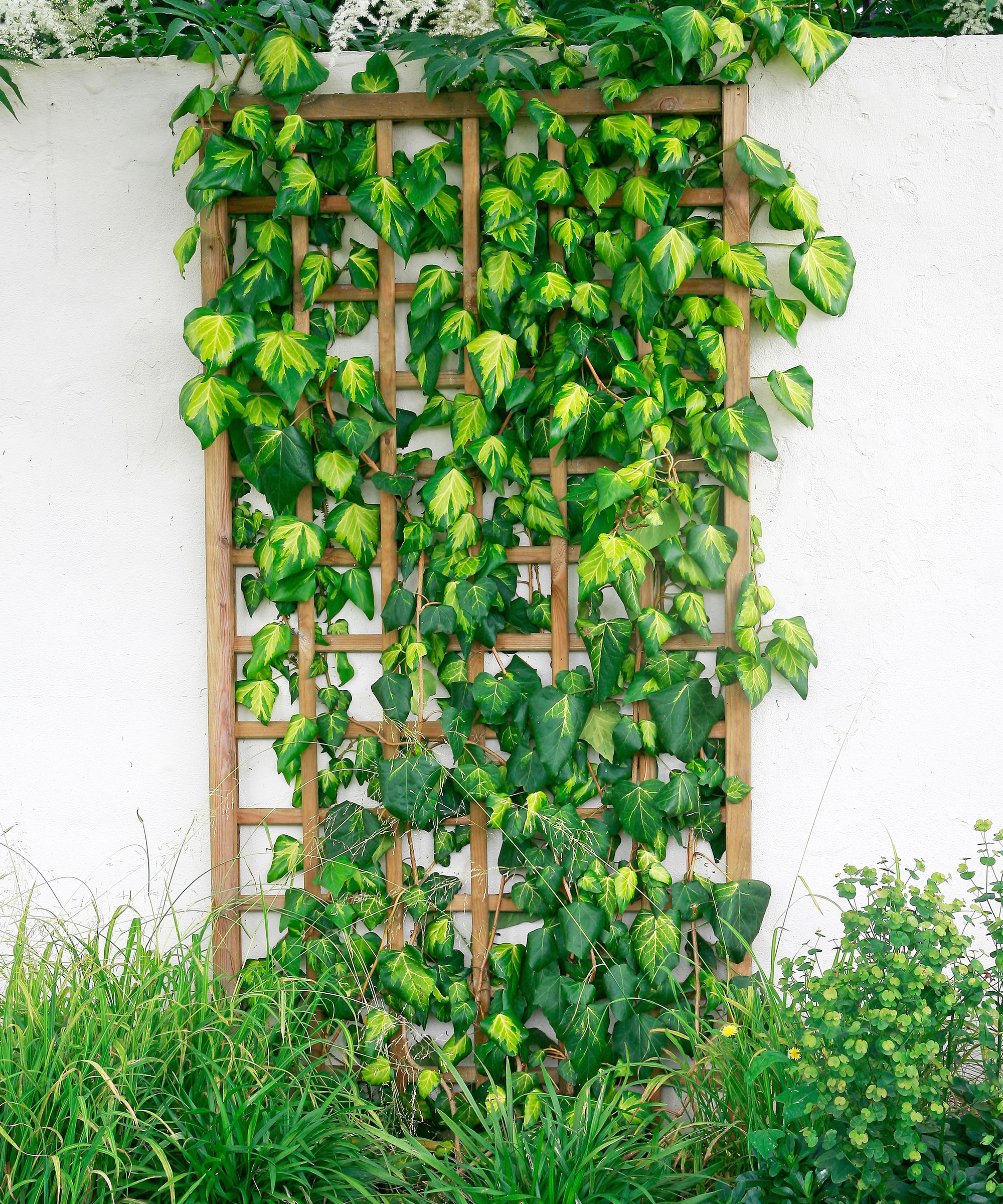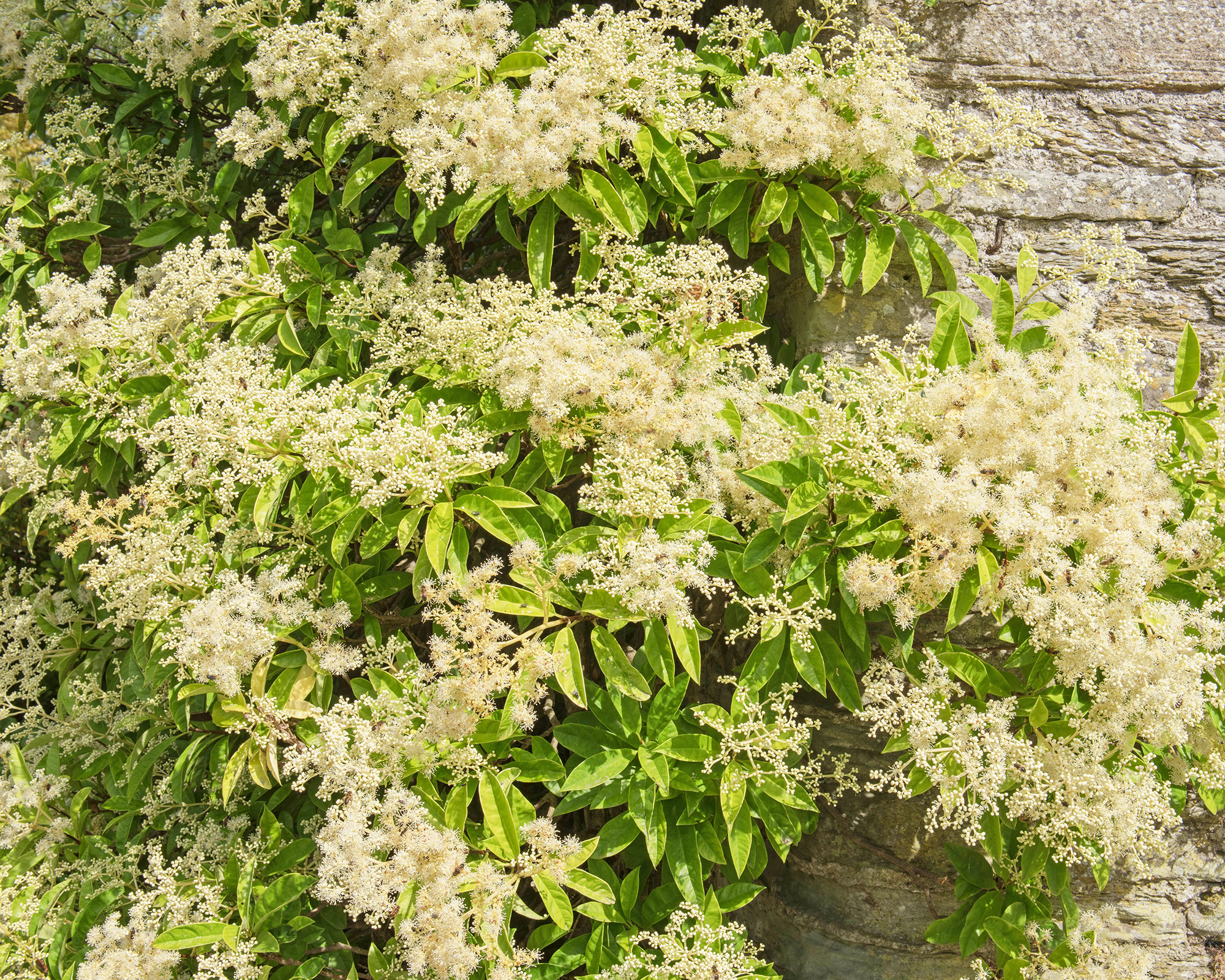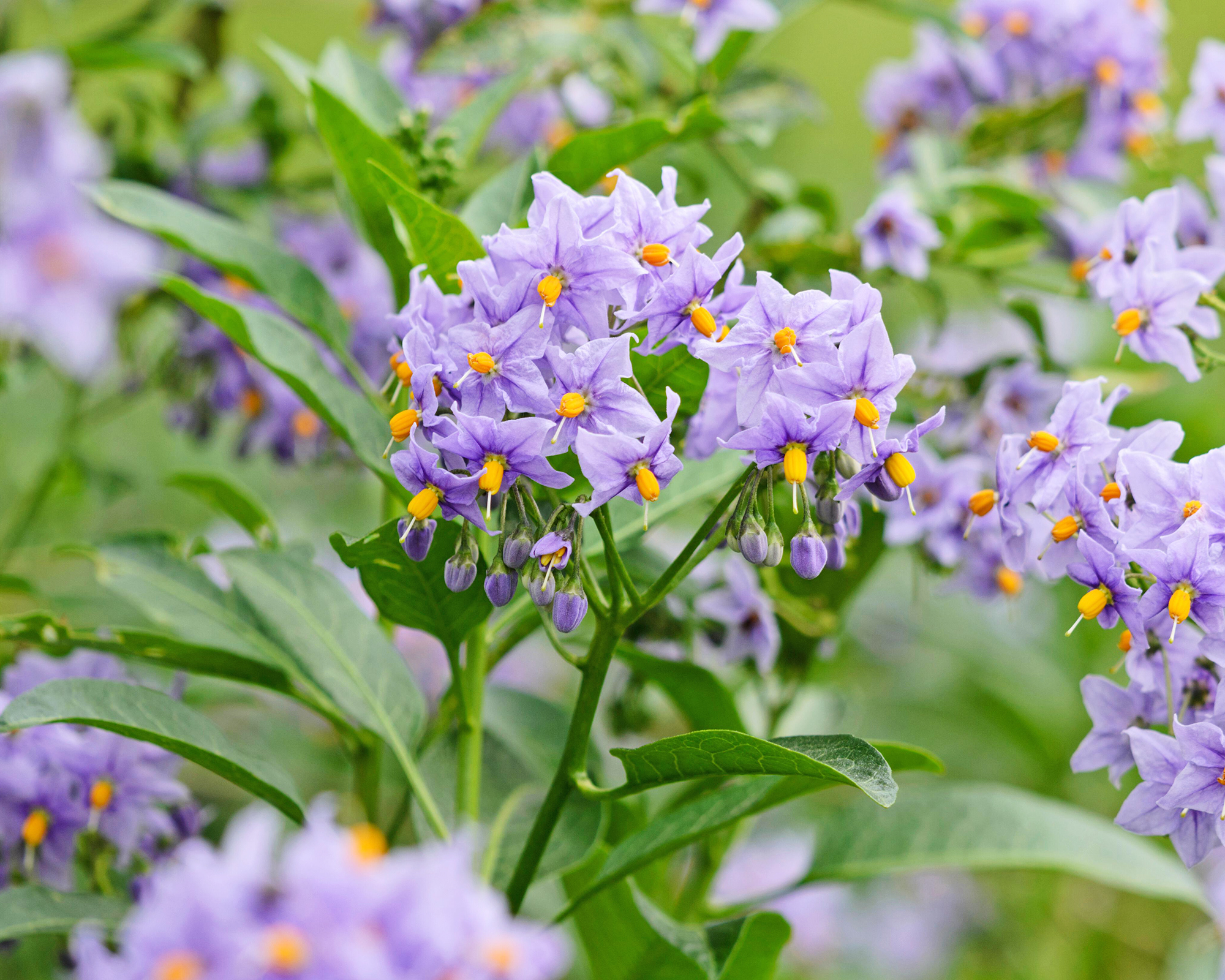7 Evergreen Climbing Vines – For Surfaces That Look Good Year-Round
Grow beautiful climbing vines to make a feature of walls, fences, and pergolas. This selection of evergreen climbing plants will add interest to every season.


Climbing plants are great additions to a garden or patio. They add vertical interest, cover up unsightly walls or other vertical surfaces, shade sunny areas, and provide privacy. It’s easy to find vines that will grow in various climates and garden conditions, but how many give coverage year-round?
For year-round privacy, wall coverage, and shade, you need evergreen climbing vines. These plants do not lose their foliage in the winter.
When choosing among these vines, consider their appropriateness for your USDA hardiness zone, whether they need sun or shade, and whether or not you have a sturdy vertical surface for them to climb.
These are just a few examples of evergreen climbing plants to suit a variety of hardiness zones and growing conditions.
1. Evergreen Clematis

Also known as Armand clematis (Clematis armandii), this evergreen clematis is a woody perennial vine that is hardy in USDA zones 7 through 9. It produces star-shaped white flowers with a delicate, vanilla-like aroma. The leaves are long, dark green, and glossy.
Evergreen clematis grows pretty aggressively and will climb a support up to 30 feet (9m) high. However, you can easily keep it to a reasonable size with regular pruning after flowering.
Grow evergreen clematis in full sun or partial shade. It prefers rich soil that has excellent drainage. It will not tolerate soil that is too wet. Clematis is a heavy feeder, so enrich the soil with compost and use a low-nitrogen fertilizer throughout the growing season.
Sign up for the Gardening Know How newsletter today and receive a free copy of our e-book "How to Grow Delicious Tomatoes".
2. Star Jasmine

Star jasmine (Trachelospermum jasminoides) is a popular evergreen vine for its fragrant white flowers that attract bees and other pollinators. The attractive leaves are dark green, glossy, and oval-shaped.
It is not a true jasmine but is an evergreen in USDA zones 7 through 10 that can cover a vertical support or sprawl along the ground as a ground cover.
Although it tolerates shade, star jasmine should be grown in full sun for the best flowering. It prefers evenly moist soil that is loamy and drains well. In colder climates, you can grow star jasmine in a container and bring it indoors for overwintering.
3. Carolina Jessamine

Another false jasmine is Carolina jessamine (Gelsemium sempervirens) or Carolina yellow jasmine. Native to the southern US and Mexico, this pretty evergreen vine is hardy in USDA zones 7 through 10.
The attractive light green leaves may develop interesting colors in winter, especially in the colder areas of its range. The flowers are yellow and funnel-shaped.
Grow Carolina jasmine in full sun and moist, rich, well-drained soil. This is a twining vine that grows best on arbors and trellises as opposed to walls. If not given a support, it will grow as a shrubby groundcover.
Note that Carolina jessamine is toxic to humans and animals, so should be avoided where there are young children or pets prone to eating plants.
4. English Ivy

English ivy (Hedera helix) is a controversial plant because of its aggressive, invasive growth. However, it is a versatile, hardy, and easy plant to grow in colder climates. Hardy in zones 4 through 9, it will quickly grow up vertical surfaces, providing year-round coverage with minimal effort. The glossy, dark green leaves are attractive, while the flowers are insignificant.
Native to Europe, English ivy is considered an invasive plant in many parts of North America. If you choose to use it, grow well away from wooded areas, where it can spread and become problematic. Growing it in a container is a good way to enjoy the plant while curbing its invasive tendanceis.
Within the confines of your garden, English ivy thrives in shade and tolerates average soil and drought conditions.
5. Persian Ivy (Hedera colchica)

Persian ivy (Hedera colchica) is a non-native ivy that can grow aggressively in some areas, but it is less invasive and problematic than its relative, English ivy.
Persian ivy is evergreen and hardy in USDA zones 6 through 9. It can grow up to 50 feet (15m) tall and be a climbing vine or groundcover. The leaves are larger than those of other ivies and are heart-shaped, leathery, and slightly curled.
Persian ivy grows well in partial and full shade. It also tolerates dry soil and is generally very easy to grow even in poor soil. Like other ivies, Persian ivy uses rootlets to attach to and climb vertical surfaces. Prune regularly to keep it under control and prevent its spread to areas you don’t want it.
6. Climbing Hydrangea

Hardy in zones 8 through 10, the evergreen climbing hydrangea variety Pileostegia viburnoides has attractive, shiny, green foliage and panicles of lacy, creamy white flowers that bloom in summer and fall.
It can grow up to about 15 feet (7.6m) tall and readily clings to vertical surfaces. It will take a few years of establishment to bloom, but once it does, this climber flowers prolifically and attracts many pollinators.
Climbing hydrangea is a good choice for shady areas, but it will also grow in sunny spots. It grows best in moist soil that drains well.
7. Chilean Potato Vine

Chilean potato vine (Solanum crispum) is a climbing evergreen vine native to Chile and Argentina. It's suitable for USDA zones 9 to 11.
A member of the nightshade family, Chilean potato vine is a little shorter than other vines (6 to 12 feet or 1.8 to 3.7m). It produces attractive purple flowers with vibrant yellow stamens and has a sweet smell followed by pretty berries.
Grow Chilean potato vine in rich, medium-moisture soil that drains well. It grows well in full sun or partial shade. Be aware that this plant is poisonous, so take care if growing in a garden where children will be.

Mary Ellen Ellis has been gardening for over 20 years. With degrees in Chemistry and Biology, Mary Ellen's specialties are flowers, native plants, and herbs.